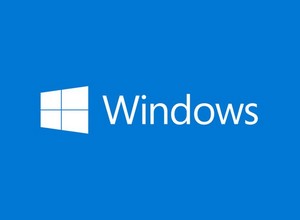 [German]I have received a user message about problems with virtualization using VMware Workstation Pro 17.x on Windows 11 24H2 clients. One user complains that the guest operating systems run extremely slowly. When VMware Workstation is started as a special administrator, virtualization works as expected.
[German]I have received a user message about problems with virtualization using VMware Workstation Pro 17.x on Windows 11 24H2 clients. One user complains that the guest operating systems run extremely slowly. When VMware Workstation is started as a special administrator, virtualization works as expected.
Problem description from a user
Recently I received an e-mail from Kai with the subject "VMware Workstation Pro 17 extremely slow" in which he complains about a "strange behavior" of VMware. He uses VMware Workstation Pro 17 on a client with Windows 11 24H2. According to his email, he claims to have reinstalled the client with this version of Windows.
As always, he created an image beforehand using the VM converter in order to then transfer all the data from his "old PC" to the newly installed PC. This is to be done via VMware Workstation, i.e. the old PC was transferred to a virtual machine (VM) using the VM converter.
The procedure was as follows: Convert old PC to VM, then install the latest Windows 11 24H2 on the PC and add VMware Workstation 17.x afterwards. The idea was to start the previously created virtual machine (VM) and start transferring data to the Windows 11 host.
What he got, however, was an extremely slow story. Trying to start a VM means waiting forever. Less than 20% of the programs can even be opened in the VM. Opening Windows Explorer takes forever, the reader wrote.
He checked the CPU, network and memory utilization and found that everything was in the green zone. He then tested for three days without success, cloned the VMs – but got nowhere. He noted that virtualization with VMware Workstation 17.x under Windows 10 always worked well.
There was something about VBS
I immediately remembered my blog post Windows 11: Virtualbox collides with Hyper-V? from January 2025. There I reported on slow VMs under Virtualbox. The cause is the virtualization functions (Virtual Based Security, VBS, etc.), which are used excessively in Windows 11 24H2 and collide with certain Virtualbox versions.
In the comments to the German edition of the blog post, German blog reader Wolf got in touch and wrote that the whole VBS is also a problem under VMWare (possibly not as pronounced as with Virtualbox). If Hyper-V (also VBS, you can see in msinfo32 under "Virtualization-based security") is activated, performance problems could also occur on this platform, he said.
The reader wrote that on his machines, on which a VM has to run, VBS is switched off completely. This is sometimes not so easy – he linked to the GitHub article disabledevicegard.ps1 (a PowerShell script to disable the Device Gard and Virtual Based Security, VBS.
With VBS and Hyper-V completely disabled, VMWare Workstation and Virtualbox work on Windows 11 24H2 in the reader's environment without any problems and without the Virtualbox "green turtle" message.
Workaround: Running VMware as administrator
German blog reader Kay wrote me in his e-mail that after a lot of testing he found a "workaround". As soon as he opens VMware Workstation via the Administrator user account (the Admin user did not work), everything runs smoothly in the VM. He asked if I had heard of the problem before, or if there was another setting to be able to start the VM normally again under Windows 11 24H2?
I have outlined the probable cause above under Windows 11 24H2. If I search the Internet, entries such as Performance Issue – Workstation 17.x – Win11 Pro, und Slow virtualization on Windows 11 [VMware Workstation Pro] on reddit.com may be found.
In the latter reddit.com post, someone writes that the efficiency problem in Windows 11 comes from the Intel processors. The problem stems from the way Windows 11 assigns tasks to the P and E cores on 12/13/14th Gen Intel CPUs. In VMWare's default configuration, everything is assigned to the efficiency cores, which is why it is so slow. I had already mentioned this topic in the post Windows 11: (P-Core) problems with Intel hybrid CPUs and network drivers in a different context.
It appears that neither Microsoft nor VMWare have been aware of the problem or effectively communicating a solution for two years. However, the solution is quite simple, they say: "Start VMWare as an administrator. You can also switch the power mode to "Best Performance", which will give you an additional 10-15% speed boost." Exactly what the blog reader found out.
The reddit.com thread also states that there are some other solutions, such as disabling the e-cores in the BIOS, or in the vmx configuration file, or setting the process priority to high (when the VM is in focus) in the VM settings. But none of this is necessary if the VMWare is running as administrator.





